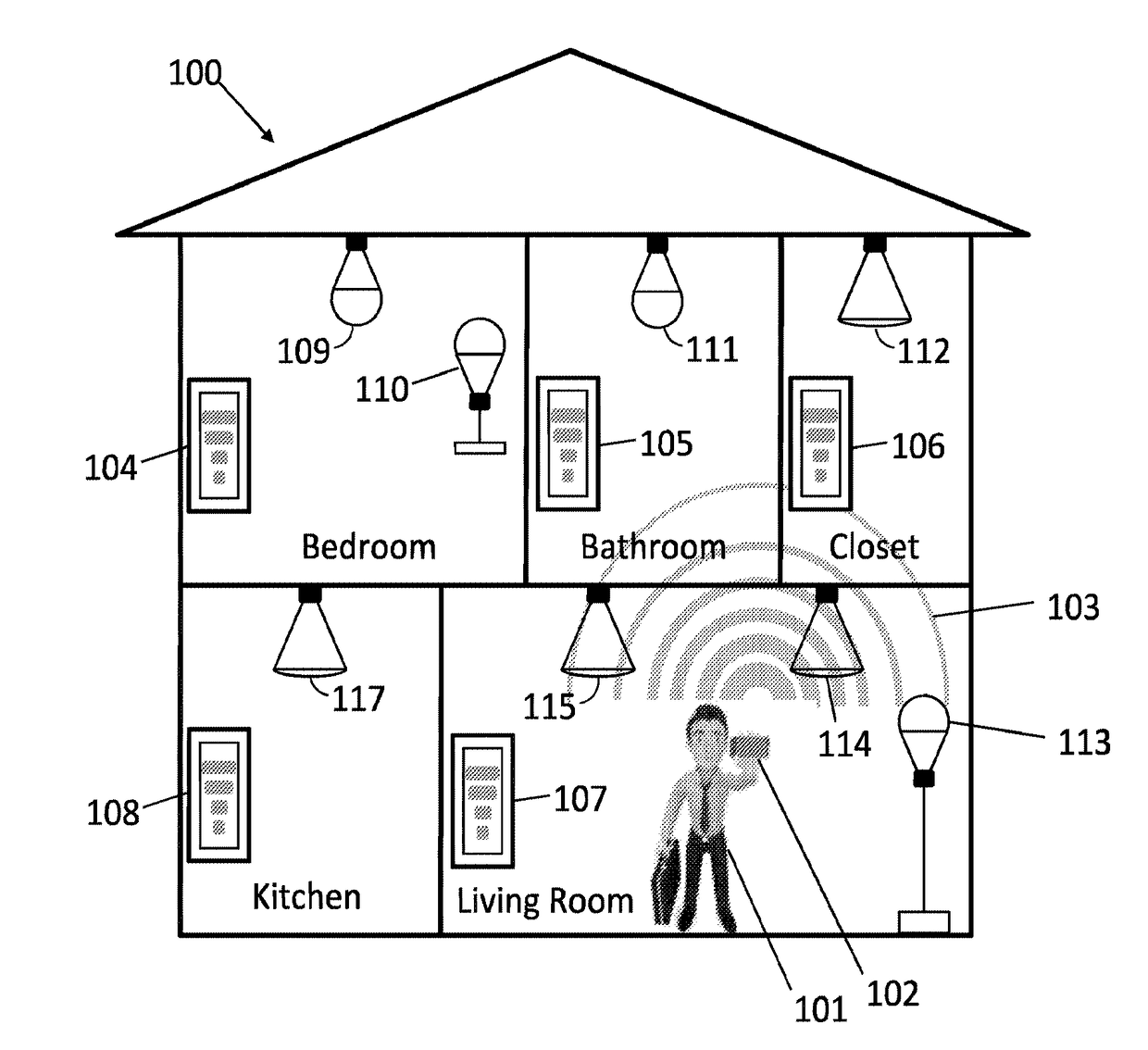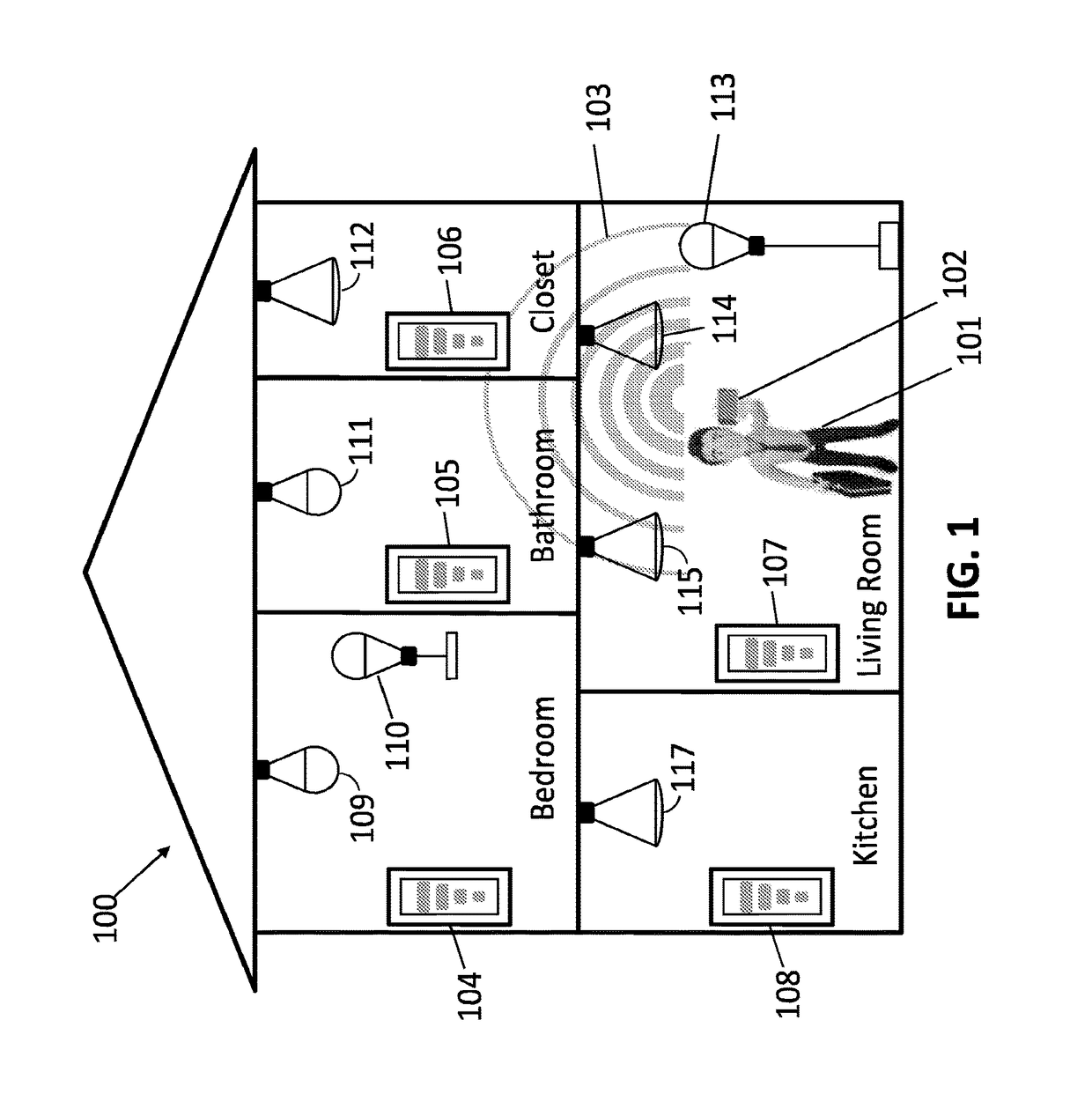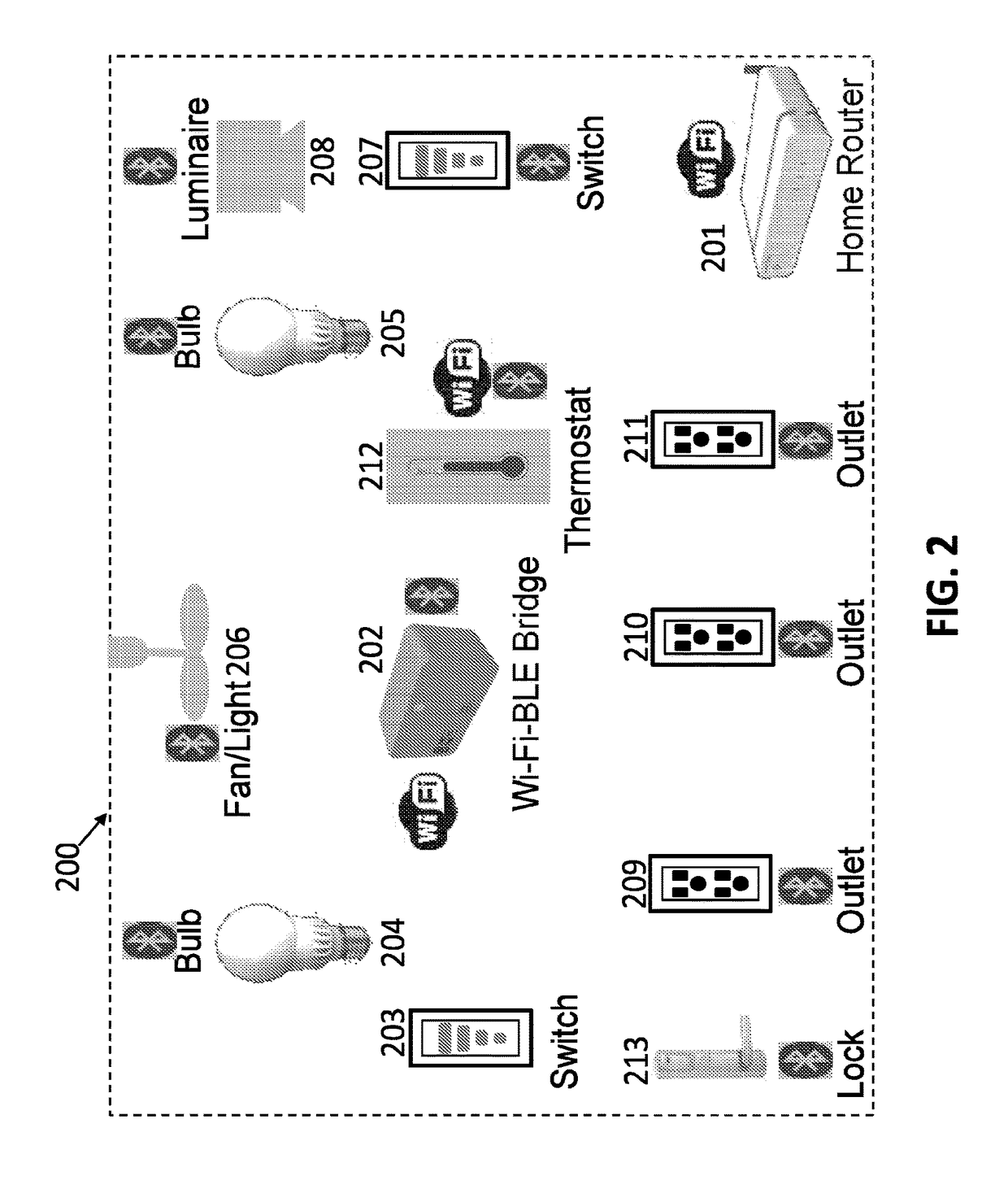Adaptive home and commercial automation devices, methods and systems based on the proximity of controlling elements
a technology of home and commercial automation and proximity control, applied in the direction of computer control, instruments, wireless commuication services, etc., can solve the problems of wi-fi or ethernet network administration, expensive proprietary hardware and software, complicated setup and maintenance, etc., and achieve low cost, minimal additional cost, substantial feature and user benefits
- Summary
- Abstract
- Description
- Claims
- Application Information
AI Technical Summary
Benefits of technology
Problems solved by technology
Method used
Image
Examples
operational example
[0240]In the event that no UC is present, the Slave Devices operate autonomously. If there is a UC present, it will take control of the configuration of the available in range devices. In the event more than one UC is present, the UCs will coordinate to determine which UC should control which (sub)set of devices, based on a variety of rules.
[0241]In the case a new (but authorized) UC attempts to join / configure a network of smart bulbs, each SD will send advertisements, which the UC will receive (for in range SDs), and will attempt to establish a connection with.
[0242]Referring again to FIG. 11, the simplistic case is shown where all Bluetooth connections between the User Central (1100) and the Slave Devices SD1 (1101) through SD12 (1112) are mapped one-to-one, each with an individual connection (respectively connections 1121, 1122, 1123, 1124, 1125, 1126, 1127, 1128, 1129, 1130, 1131 and 1132). In this case, there are 12 separate open connections that the User Central has to manage....
PUM
 Login to View More
Login to View More Abstract
Description
Claims
Application Information
 Login to View More
Login to View More - R&D
- Intellectual Property
- Life Sciences
- Materials
- Tech Scout
- Unparalleled Data Quality
- Higher Quality Content
- 60% Fewer Hallucinations
Browse by: Latest US Patents, China's latest patents, Technical Efficacy Thesaurus, Application Domain, Technology Topic, Popular Technical Reports.
© 2025 PatSnap. All rights reserved.Legal|Privacy policy|Modern Slavery Act Transparency Statement|Sitemap|About US| Contact US: help@patsnap.com



